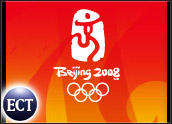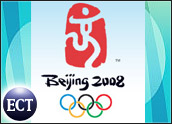
The word “footprint” has gained a lot of currency of late, particularly when talking about carbon consumption and emissions, but also within the IT world. Seen in its original and primary form, a footprint contains lots of information about the identity and nature of the beast that made it.
Looking to improve on ways of determining the value of IT investments, such as return on investment (ROI) and total cost of ownership (TCO), Harvard Business School Associate Professor Andrew McAfee has been considering the concept of technology footprint. “A technology’s footprint is its geographic, divisional, and/or functional reach. It’s a description of how much territory a piece of IT is intended to cover,” McAfee said.
Determining a technology’s footprint is one of three core elements — along with cost and capabilities — which organizations can use to better design, evaluate and manage IT projects, according to McAfee. “Network technologies tend to have large footprints (how much territory does e-mail cover?) and ones that are easy to expand. Function technologies tend to have fairly small ones; a CAD (computer aided drafting) system isn’t that useful outside the engineering department. Enterprise technologies like enterprise resource planning and customer relationship management can have small footprints, or very large ones. Their complexity, and hence cost, goes up geometrically with footprint, so their borders should be set carefully.”
Choosing Wisely
In most cases, McAfee asserts, these three elements — cost, capability and footprint — provide enough information for business executives to make IT decisions. “They also provide a basis for prioritizing IT initiatives, something many companies struggle with. Is it more important for customer interaction processes to be standardized across all business units, or for vendor interaction processes to be? Is it more important to change how engineers collaborate, or to give them better tools for experimentation?
“These are not easy questions, but they are important and appropriate ones for leadership to discuss,” McAfee wrote in a 2006 blog entry.
Responding to the post, critics contended that it is impossible “to accurately describe and ascribe benefits.” Moreover, one claimed, the first step in building a business case for an IT project is building an extensive, quantitative case for it, one that has led to the prevalence of ROI. Not doing so would amount to an abandonment of management’s fiduciary duty.
While acknowledging this to be the case, McAfee argued that organizations also invest capital on R&D and advertising and do so without quantifying expected results and benefits. “So it’s just not accurate to say that companies only make large investments once they’ve done an ROI calculation. In some of the most critical areas of the business, in fact, they do something close to the opposite. They discuss budgets, goals and desired outcomes but not projected ROIs.
“IT looks very much like a standard capital investment — a company pays cash and acquires an asset, whether that asset is a server and a CD full of software, the right to access a system over a network, etc. The real phenomenon of interest is the attempt to acquire an IT-based capability, just like advertising is an attempt to build a brand and R&D is an attempt to innovate. Each of these attempts requires sustained management attention, not just a periodic bake-off among business cases in which the highest ROI figure wins,” he asserted.
How to Use Footprint, or Scope
The debate about how best to assess and evaluate the merits of IT projects, and the use of ROI to do so, is not new, notes Heiko Ewert, global head of business consulting and development at SAP. What McAfee refers to as “technology footprint,” Ewert told TechNewsWorld, “represents what we would most typically call the scope of a project. Depending on the scope, the project will cause certain cost and take certain time, and it will cause a certain effect — which would be the anticipated capabilities.”
Factoring in a technology’s footprint, or scope, is an essential element in determining the value and merits of any IT project, he continued.
“Determining the scope of a project is one of the most natural and most necessary prerequisites for planning an IT project. The typical pricing of enterprise software — as far as I can judge — does use dimensions of the footprint. Number of users, number of solutions, number of transactions are dimensions of the technology footprint, and that’s what you typically see in technology price lists.”
As McAfee notes in his article, an enterprise technology’s footprint can vary widely from small to very large. A project’s cost and complexity depend heavily on it, Ewert elaborated. “For that reason, discussions on the scope are always an important element in the early phases of our projects.”
The challenge is to determine the scope of an enterprise technology that offers an optimal relationship between cost and effect. “One way of reaching this optimum would be, for example, to start the discussion with the minimal footprint that would make any [technological] sense, and then add piece by piece additional geographies or divisions or functions, or whatever. For any addition you need to evaluate the incremental cost, and time, and the incremental effect or capability,” Ewert explained.
Following such a method, planners would, at some point in time, reach an optimum, a point where the marginal cost of potential additions would exceed their effect, and that’s where the process would stop.
Total Economic Impact
Factoring what McAfee defines as “technological footprint” into IT project plans and evaluations — though perhaps not known as such — is considered standard IT practice, according to James Staten, principal analyst at Forrester Research. However, “we tend to see IT shops — much in line with the observations made by the professor in his blog — look more at the cost of operations, performance requirements and IT interdependencies of various tech investments more so than their footprint,” Staten told TechNewsWorld.
Using technological footprint as a core element in identifying all the interdependencies of a given technology and determining the full implications of a given project so that they can be fully realized and measured is akin to the approach used in Forrester’s Total Economic Impact (TEI) methodology, Staten observed.
Can the footprint concept be applied practically by business executives and project planners to determine some optimal level or range of a proposed technology’s functional and physical scope and scale and its value? “I would say it is another alternative means of measurement rather than recommend it be added on top of whatever methodology an enterprise is already using,” Staten said.
“We are finding that TCO is too complex, subject to interpretation and time consuming for many IT shops, and thus they fall back to ROI in many cases. Technology footprint may suffer the same fate as TCO. The Forrester TEI methodology is more standardized and simpler to implement, thus the traction it has with enterprise IT customers today.”
In line with this, Forrester has noted that enterprises are adopting simpler methods to evaluate and justify smaller IT capital investments such as relative cost of operations “that don’t require the rigor of identifying and estimating the cost of all aspects of an implementation but simply identify the cost categories that will likely be affected by an investment and calculate the expected deltas in just these categories.”
What implications would using the footprint concept have on software pricing? “That’s a tough one to answer because while software pricing ideally would be tied to the value it brings to the buyer, it has to be tied to something that can be easily measured and that isn’t the case for a technology footprint. Ease of measurement is paramount because no one wants prolonged negotiations or audits come renewal time. Thus we see software tied to things that can be easily measured such as number of users, servers, CPUs, etc.,” Staten concluded.




















































